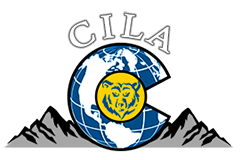Assessments
Assessing the Learning Progress of Young Students
The assessment of the development and learning of young students is an essential component of the CILA curriculum and helps guide continued development, learning and teaching. Students are observed in a variety of situations and a wide range of assessment strategies are used. Teachers observe CILA students in order to:
- Identify the student level of knowledge, skills, and understanding
- Build up a clear picture of the student and his or her interests
- Identify what and how the student is thinking and learning
- Assess the effectiveness of the environment on the student’s learning
- Extend the student’s learning
It is important to identify the needs of each student and to view learning as a continuum, with each student achieving developmental milestones in different but relevant ways. Through listening and observing, areas of learning that the students particularly enjoy can be identified and stimulating experiences can consolidate or extend the learning further.
CILA Assessment Plan
- All new CILA students are pre-tested with the MAPS survey tests in reading, language usage, and mathematics to develop a baseline for setting achievement goals and measuring growth over time.
- Students transferring to CILA may have data from previous schools to complement this assessment.
- The MAPS will be administered up to three more times per academic year, essentially every quarter before the end of each nine-week term, to assess strengths and weaknesses in students and to recommend those students who will need tutoring.
- Results from the MAPS and CMAS annual state assessment are analyzed to refine academic goals, modify student groupings, and help guide instruction.
- Additional reading testing is done throughout the school year for students in grades K-5 using the DIBELs reading assessment and the Voices Benchmark assessment. These assessments are used to place student in guided reading groups based on instructional level.
Student portfolios are also used to provide evidence of achievement and these include writing samples from each year, along with specific sample work tied to each themed unit.
CILA Assessment Policy
NWEA MAP Growth Skills Test
MAP – Measure of Academic Progress
MAP Growth is the most trusted and innovative assessment for measuring achievement and growth in K–12 math, reading, language usage, and science. It provides teachers with accurate, and actionable evidence to help target instruction for each student or groups of students regardless of how far above or below they are from their grade level. It also connects to the largest set of instructional content providers, giving educators flexibility in curriculum choices.
For a comprehensive list of information and resources, please visit the MAP Family Toolkit webpage at: https://www.nwea.org/the-map-suite/family-toolkit/
DIBELS
(Dynamic Indicators of Basic Early Literacy Skills)
DIBELS ® is a set of procedures and measures for assessing the acquisition of literacy skills. They are designed to be short (one minute) fluency measures that can be used to regularly detect risk and monitor the development of early literacy and early reading skills in kindergarten through eighth grade.
DIBELS was developed to measure recognized and empirically validated skills related to general reading outcomes. Each subtest has been thoroughly researched and demonstrated to be a reliable and valid indicator of early literacy development. When implemented as recommended, DIBELS results can be used to evaluate individual student development as well as provide grade-level feedback toward validated instructional objectives.
For more of an overview of DIBELS, please visit: https://dibels.uoregon.edu/about-dibels

